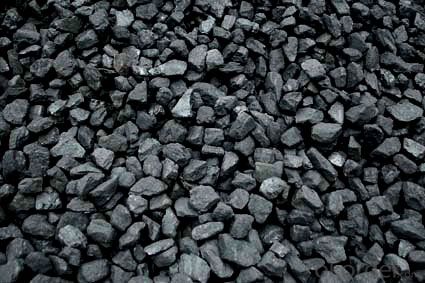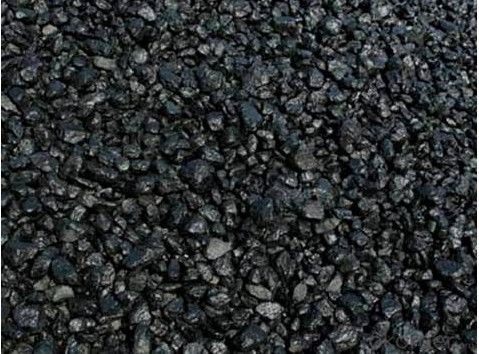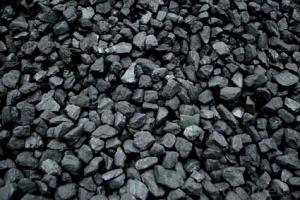Coal Based Pickling Granular Activated Carbon 12x40 Mesh
- Loading Port:
- Tianjin
- Payment Terms:
- TT OR LC
- Min Order Qty:
- 1000 m.t.
- Supply Capability:
- 5000 m.t./month
OKorder Service Pledge
OKorder Financial Service
You Might Also Like
1.Structure of Anthracite Description
Anthracite is made from Shanxi,the coal capital of the word .The quality is very high due to its unique resource .It has been exported to most of the world ,especially to Japan and Korea,as well as mid east.
It is commonly used in drinking water ,food industry ,chemical /dyeing industry ,sea/salt water filtration ,petro-chemical industry ,pulp/paper industry ,sauna,spa,pool,boiler ,etc.
Advantages:
1. Longer Filter Runs2. Faster Filtration3. Long Lifetime4. Good Separation Characteristics5. Savings water and power in washing6.Removes more iron and manganese salts tration ,petrochemical industry ,pulp /paper industry ,sauna,spa,pool,boiler,etc.
2. Main Features of Anthracite
Fixed Carbon: 78 %
Ash: 18 %
Volatile Matter: 4 %
Sulphur: 1.0 %
Moisture: 11 %
Gross Calorific Value: 6450 Kcal
Size: 0 mm - 19 mm: 90%
3. The Images of Anthracite


4. The Specification of Anthracite
1. Fixed carbon: 90%min
2.Uniform particles
3.Good separation characteristics
4. Long life
5. Widely used
6.activated anthracite:
7.Certificate: ISO9001, ISO9002, NSF
8.Usage: for water and air purification, etc.
5.FAQ of Anthracite
1). Q: Are you a factory or trading company?
A: We are a factory.
2). Q: Where is your factory located? How can I visit there?
A: Our factory is located in ShanXi, HeNan, China. You are warmly welcomed to visit us!
3). Q: How can I get some samples?
A: Please connect me for samples
4). Q: Can the price be cheaper?
A: Of course, you will be offered a good discount for big amount.
- Q:What are the effects of carbon emissions on freshwater systems?
- Freshwater systems are significantly affected by carbon emissions, with one major consequence being the acidification of water bodies. When carbon dioxide dissolves in water, it creates carbonic acid, resulting in a decrease in pH levels. This acidification negatively impacts freshwater organisms like fish, amphibians, and invertebrates, as it disrupts their physiological processes and can even lead to their death. Furthermore, carbon emissions contribute to global warming, which in turn has an impact on freshwater systems. Rising temperatures can lead to increased evaporation, causing water scarcity in specific regions. This scarcity has severe implications for both human populations and ecosystems that rely on freshwater resources. Additionally, the warming of freshwater systems can disturb the balance of the ecosystem by promoting the growth of harmful algae blooms. These blooms thrive on excess nutrients, such as nitrogen and phosphorus, which are often present in runoff from agricultural and urban areas. The combination of higher temperatures and nutrient enrichment can result in the proliferation of harmful algae, which produce toxins that are harmful to aquatic life and human health. Moreover, carbon emissions indirectly affect freshwater systems through their contribution to climate change. As global temperatures rise, glaciers and polar ice caps melt, leading to an influx of freshwater into the system. This sudden increase in freshwater disrupts the delicate balance between saltwater and freshwater ecosystems, affecting the distribution and migration patterns of various species. It also alters salinity levels, impacting the survival and reproduction of marine organisms. In conclusion, carbon emissions have various negative effects on freshwater systems, including acidification, water scarcity, the proliferation of harmful algae blooms, and disruptions to the delicate balance between saltwater and freshwater ecosystems. It is crucial to reduce carbon emissions and mitigate the impacts of climate change to protect the health and sustainability of freshwater systems.
- Q:What are the main sources of carbon on Earth?
- The main sources of carbon on Earth are both natural and anthropogenic (caused by human activity). In terms of natural sources, carbon is present in the Earth's atmosphere in the form of carbon dioxide (CO2), which is released through natural processes such as volcanic eruptions, respiration by plants and animals, and the decay of organic matter. Carbon is also found in the Earth's lithosphere in the form of carbonate rocks, such as limestone and dolomite, which are formed from the shells and skeletons of marine organisms. Anthropogenic sources of carbon are primarily associated with the burning of fossil fuels, such as coal, oil, and natural gas, for energy production and transportation. When these fossil fuels are burned, carbon dioxide is released into the atmosphere, contributing to the greenhouse effect and climate change. Deforestation and land-use changes also release carbon stored in trees and vegetation into the atmosphere. Additionally, human activities like industrial processes, cement production, and waste management contribute to the emission of carbon dioxide and other greenhouse gases. These activities release carbon that has been locked away for millions of years, significantly altering the natural carbon cycle. Overall, while carbon is naturally present on Earth, human activities have significantly increased its release into the atmosphere, leading to concerns about climate change and the need for sustainable practices to reduce carbon emissions.
- Q:How does carbon contribute to the strength of alloys?
- Carbon contributes to the strength of alloys by forming interstitial solid solutions with metals, which increases the hardness and strength of the material. The carbon atoms occupy the spaces between the metal atoms, creating lattice distortions and enhancing the overall strength of the alloy. Additionally, carbon can also form compounds with metals, such as carbides, which further improve the hardness and wear resistance of alloys.
- Q:How is carbon used in the production of ceramics?
- Carbon is used in the production of ceramics as a key component in the creation of carbon-based materials, such as carbon fibers or carbon nanotubes, which can be incorporated into ceramic matrices to enhance their mechanical properties, electrical conductivity, and thermal stability. Additionally, carbon can also be utilized as a reducing agent in certain ceramic processes, such as the production of silicon carbide, where it reacts with oxygen to remove impurities and stabilize the ceramic structure.
- Q:What are the long-term effects of increased carbon emissions on ecosystems?
- Increased carbon emissions have significant long-term effects on ecosystems. One major consequence is the disruption of the Earth's climate system, leading to more frequent and intense extreme weather events such as hurricanes, droughts, and heatwaves. This can result in habitat destruction, loss of biodiversity, and increased vulnerability of species to extinction. Furthermore, elevated carbon dioxide levels in the atmosphere can contribute to ocean acidification, which harms marine ecosystems and disrupts the delicate balance of marine life. Overall, the long-term effects of increased carbon emissions on ecosystems are detrimental and pose a grave threat to the health and stability of our planet's natural systems.
- Q:What are the carbon nanotube applications?
- The hydrogen storage materials: gas adsorption in adsorption is a solid adsorbent surface behavior the occurrence process of adsorbent and solid surface characteristics are closely related. The adsorption mechanism of nanoparticles, it was generally accepted that adsorption of carbon nanotubes is mainly due to the surface hydroxyl carbon nanotubes nanoparticles. The effect of carbon nanotubes on the surface of to hydroxyl and certain cationic bonding, so as to achieve the apparent of metal ions or organic matter adsorption. In addition, carbon nanotube particles have a large surface area, is also an important reason for the adsorption of carbon nanotubes. Zheng Qingrong, Gu Anzhong and [4] were studied on the adsorption behavior of hydrogen in carbon nanotubes Cheng Hui Ming et al. Synthesis of SWNTS treated properly can store hydrogen at room temperature, the hydrogen storage weight of up to 4.2%, and 78.3% of the hydrogen storage under normal temperature and pressure The hydrogen is released, and the remaining hydrogen is released after heating. The SWNTS can be reused and has a high commercial valueThe proton exchange membrane fuel cell (PEM) is a new type of carbon nanotubes: fuel cell vehicle power supply the most potential, the fuel cell through the consumption of hydrogen to generate electricity, the exhaust gas discharged into water vapor, therefore no pollution. It is compared with the lithium ion battery and Ni MH battery has great superiority. Can use carbon nanotubes hydrogen storage material supply hydrogen, can also be through the decomposition of oil and gas and other hydrocarbons or directly from the air to obtain hydrogen fuel cell hydrogen source.
- Q:Rod box material, there is a kind of material called carbon fiber, who knows this material is good?
- Carbon fiber has many excellent properties, carbon fiber axial strength and high modulus, low density, high performance, no creep, non oxidation under the environment of high temperature resistance, good fatigue resistance, between heat and electrical conductivity between the metal and non metal, smaller thermal expansion coefficient and anisotropy, good corrosion resistance, X Radiability good. Good conductivity, thermal conductivity, good electromagnetic shielding, etc..
- Q:Why does the carbon content of steel increase and the mechanical properties change?
- Steel is an alloy of iron and carbon in 0.04%-2.3% between carbon content. In order to ensure its toughness and plasticity, the main elements in addition to iron, carbon and carbon content is generally not more than 1.7%. steel, and silicon, manganese, sulfur and phosphorus. Classification method of steel variety, there are seven kinds of main methods:1, according to quality classification(1) ordinary steel (P = 0.045%, S = 0.050%)(2) high quality steel (P, S = 0.035%)(3) high quality steel (P = 0.035%, S = 0.030%)2. Classification by purpose(1) building and engineering steel: A. ordinary carbon structural steel; B. low-alloy structural steel; C. reinforced steel(2) structural steelSteel manufacturing machinery: A. (a) quenched and tempered steel; surface hardening (b) steel structure: including carburizing steel, surface hardened steel, with infiltration of ammonia (c) free cutting steel; steel structure; (d) cold forming steel: steel, cold stamping.B. spring steelC. bearing steel(3) tool steel: A. carbon tool steel; B. alloy tool steel; C. high speed tool steel(4) special performance steel: A. stainless acid resistant steel, B. heat-resistant steel, including oxidation resistant steel, hot strong steel, air valve steel, C. electric heating alloy steel, D. wear-resistant steel, e. low temperature steel, F. electrical steel(5) professional steel - such as bridge steel, shipbuilding steel, boiler steel, steel for pressure vessel, steel for agricultural machinery, etc.
- Q:What is carbon black rubber?
- Carbon black rubber is a type of rubber that is reinforced with carbon black particles. Carbon black is a fine black powder made from the incomplete combustion of hydrocarbons. It is added to rubber formulations to enhance its strength, durability, and resistance to wear and tear. This type of rubber is commonly used in the manufacturing of tires, conveyor belts, seals, gaskets, and various other rubber products.
- Q:How can Dungeon Fighter Online's superior furnace rock carbon be obtained?
- DNF will be added to our senior LU Yan carbon in the mall, priced at 450 points and 50 points 10 coupon coupon 1, after use can start advanced equipment to strengthen in Kylie, strengthen the probability of success is greater, the following is a detailed introduction.
1. Manufacturer Overview |
|
|---|---|
| Location | |
| Year Established | |
| Annual Output Value | |
| Main Markets | |
| Company Certifications | |
2. Manufacturer Certificates |
|
|---|---|
| a) Certification Name | |
| Range | |
| Reference | |
| Validity Period | |
3. Manufacturer Capability |
|
|---|---|
| a)Trade Capacity | |
| Nearest Port | |
| Export Percentage | |
| No.of Employees in Trade Department | |
| Language Spoken: | |
| b)Factory Information | |
| Factory Size: | |
| No. of Production Lines | |
| Contract Manufacturing | |
| Product Price Range | |
Send your message to us
Coal Based Pickling Granular Activated Carbon 12x40 Mesh
- Loading Port:
- Tianjin
- Payment Terms:
- TT OR LC
- Min Order Qty:
- 1000 m.t.
- Supply Capability:
- 5000 m.t./month
OKorder Service Pledge
OKorder Financial Service
Similar products
New products
Hot products
Related keywords




























